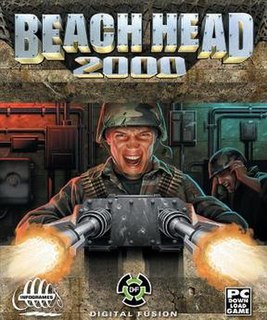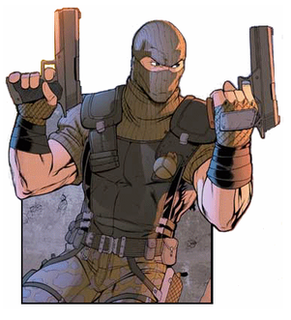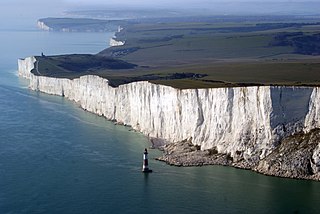
Stargate is a 1994 science fiction adventure film released through Metro-Goldwyn-Mayer (MGM) and Carolco Pictures. Written by Dean Devlin and Roland Emmerich, the film is the first release in the Stargate franchise. Directed by Emmerich, the film stars Kurt Russell, James Spader, Jaye Davidson, Alexis Cruz, Mili Avital, and Viveca Lindfors. The plot centers on the premise of a "Stargate", an ancient ring-shaped device that creates a wormhole enabling travel to a similar device elsewhere in the universe. The film's central plot explores the theory of extraterrestrial beings having an influence upon human civilization.
Stargate SG-1 is a Canadian-American military science fiction adventure television series and part of Metro-Goldwyn-Mayer's Stargate franchise. The show, created by Brad Wright and Jonathan Glassner, is based on the 1994 science fiction film Stargate by Dean Devlin and Roland Emmerich. The television series was filmed in and around the city of Vancouver, British Columbia, Canada. The series premiered on Showtime on July 27, 1997 and moved to the Sci Fi Channel on June 7, 2002; the final episode first aired on Sky1 on March 13, 2007.

Jonathan J. "Jack" O'Neill, Lieutenant General, USAF, is a fictional character in the military science fiction franchise Stargate, and primarily one of the main characters of the television series Stargate SG-1. He is most known as portrayed by actor Richard Dean Anderson, who played O'Neill in all the Stargate media since 1997, when he took over the role from actor Kurt Russell, who portrayed the character in the original Stargate film in 1994. O'Neill and Daniel Jackson are the only two characters to appear in both the original film and all 3 Stargate television series.

Richard Dean Anderson is an American actor and producer. He began his television career in 1976, playing Dr. Jeff Webber in the American soap-opera series General Hospital, then rose to prominence as the lead actor in the television series MacGyver (1985–1992). He later appeared in films such as Through the Eyes of a Killer (1992), Pandora's Clock (1996), and Firehouse (1997).
Endgame, Endgames, End Game or End Games may refer to:
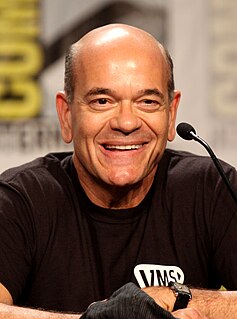
Robert Picardo is an American actor. He is known for his portrayals of Dr. Dick Richards on ABC's China Beach; the Emergency Medical Hologram (EMH), also known as The Doctor, on Star Trek: Voyager; the Cowboy in Innerspace, Coach Cutlip on The Wonder Years ; Ben Wheeler in Wagons East; and as Richard Woolsey in the Stargate television franchise. Picardo is also a member of the Board of Directors of The Planetary Society.

Douglas Christopher Judge is an American actor best known for playing Teal'c in the Canadian-American military science fiction television series Stargate SG-1. Judge played Kratos in the 2018 video game God of War, replacing long-time voice actor Terrence C. Carson. He attended the University of Oregon on a football scholarship and was a Pacific-10 Conference player.
Stargate is an adventure military science fiction franchise.

A Stargate is an Einstein–Rosen bridge portal device within the Stargate fictional universe that allows practical, rapid travel between two distant locations. The devices first appear in the 1994 Roland Emmerich film Stargate, and thereafter in the television series Stargate SG-1, Stargate Atlantis, and Stargate Universe. In these productions, the Stargate functions as a plot generator, allowing the main characters to visit alien planets without the need for spaceships or any other type of technology. The device allows for near-instantaneous travel across both interstellar and extragalactic distances.

Stargate is a science fiction media franchise based on the film written by Dean Devlin and Roland Emmerich. The franchise is based on the idea of an alien Einstein–Rosen bridge device that enables nearly instantaneous travel across the cosmos. The franchise began with the film Stargate, released on October 28, 1994, by Metro-Goldwyn-Mayer and Carolco, which grossed US$197 million worldwide. In 1997, Brad Wright and Jonathan Glassner created a television series titled Stargate SG-1 as a sequel to the film. This show was joined by Stargate Atlantis in 2004, Stargate Universe in 2009, and a prequel web series, Stargate Origins, in 2018. Also consistent with the same story are a variety of books, video games and comic books, as well as the direct-to-DVD movies Stargate: Children of the Gods, Stargate: The Ark of Truth, and Stargate: Continuum, which concluded the first television show after 10 seasons.
Avatar is a term used in Hinduism for a material manifestation of a deity. Other common uses include:
This is a list of Goa'uld technologies in the Stargate franchise. The Goa'uld are the main adversaries for most of the run of Stargate SG-1. They scavenged or conquered most of their advanced technologies from other races. However, there are innovators amongst the Goa'uld; Anubis and Ba'al in particular have been depicted with a great deal of technological ingenuity. Rather than being designed as practical, many Goa'uld devices, such as the staff weapon, are designed to have higher visual impact, meant to intimidate and reinforce their position as gods to their followers. Some pieces of Goa'uld technology, such as the hand device and the healing device, respond only to mental commands and require naqahdah in the bloodstream of the user to operate.
Line(s) in the Sand may refer to:

Stargate: The Ark of Truth is a 2008 Canadian-American, military science fiction, direct-to-video film in the Stargate franchise, acting as a sequel to the television series Stargate SG-1. It is written and directed by Robert C. Cooper, produced by Cooper, John G. Lenic, and the series' creator Brad Wright, and stars its regular cast. The film is the conclusion of the Ori arc, and picks up after the SG-1 series finale. However, it happens before the Stargate Atlantis third season finale.
Image Engine is a visual effects studio based in Vancouver, British Columbia. Founded in 1995, the studio specializes in character/creature design and animation, digital environments, VFX supervision, and concept art among other services. In 2010, the company was nominated for an Academy Award for Best Visual Effects for their work on District 9. Since then they have contributed to feature films and television series including Jurassic World, Straight Outta Compton, Game of Thrones, and Chappie.
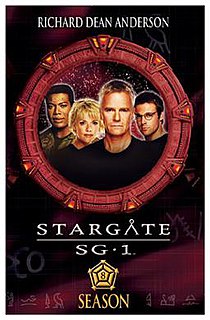
Season eight of Stargate SG-1, an American-Canadian military science fiction television series, began airing on July 9, 2004 on the Sci Fi channel. The eighth season concluded on February 22, 2005, after 20 episodes on British Sky One, which overtook the Sci Fi Channel in mid-season. This was the first season of the show to have 20 episodes instead of 22, as well as the first to air concurrently with Stargate SG-1 spinoff series Stargate Atlantis. The series was originally developed by Brad Wright and Jonathan Glassner, while Brad Wright and Robert C. Cooper served as executive producers. Season eight regular cast members include Richard Dean Anderson, Amanda Tapping, Christopher Judge, and Michael Shanks. The eighth season begins with the SG-1 team trying to revive Colonel Jack O'Neill after the events of the seventh season. At the end of the two-episode season opener, Colonel O'Neill is promoted to General and assumes command of Stargate Command (SGC), while Major Samantha Carter is promoted to Lieutenant Colonel and assumes command of SG-1. The season arc centers on the growing threat and seemingly final defeat of the Goa'uld and the Replicators, races who were introduced in the first and third season of the show, respectively.

